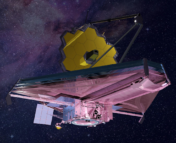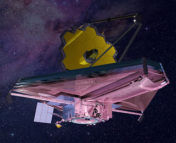Today is a huge day for astronomy. JWST has finally launched!
The space telescope successfully launched from French Guiana aboard one of the European Space Agency’s Ariane 5 rockets. Astronomers have worked decades to make today’s mission happen, and the entire astronomical community has been anxiously anticipating this day, hoping and wishing for a successful launch. We can all finally breathe a collective sigh of relief, as this morning’s launch was nominal (spaceflight talk for “everything as expected, totally okay!”).
Today’s livestream came from mission control in French Guiana, where NASA, ESA, and CSA team members directed the launch and reported on its status. (Note: the actual telescope’s mission operations are based in Baltimore at Space Telescope Science Institute!) This project is an enormous collaboration between these different space agencies, with NASA constructing the main telescope and sunshield and the ESA/CSA contributing to science instruments and providing the launch vehicle. Over 10,000 people contributed to JWST over its lifetime and even more will benefit from its data, according to NASA Associate Administrator Dr. Thomas Zurbuchen.
Today marked the 112th Ariane 5 launch, and it followed its planned trajectory perfectly according to mission control. As JWST separated from the rocket’s upper stage, we saw an incredible view of the telescope finally on its own above Earth. Soon after, the solar array deployed, which will provide the telescope with the power it needs for years to come.
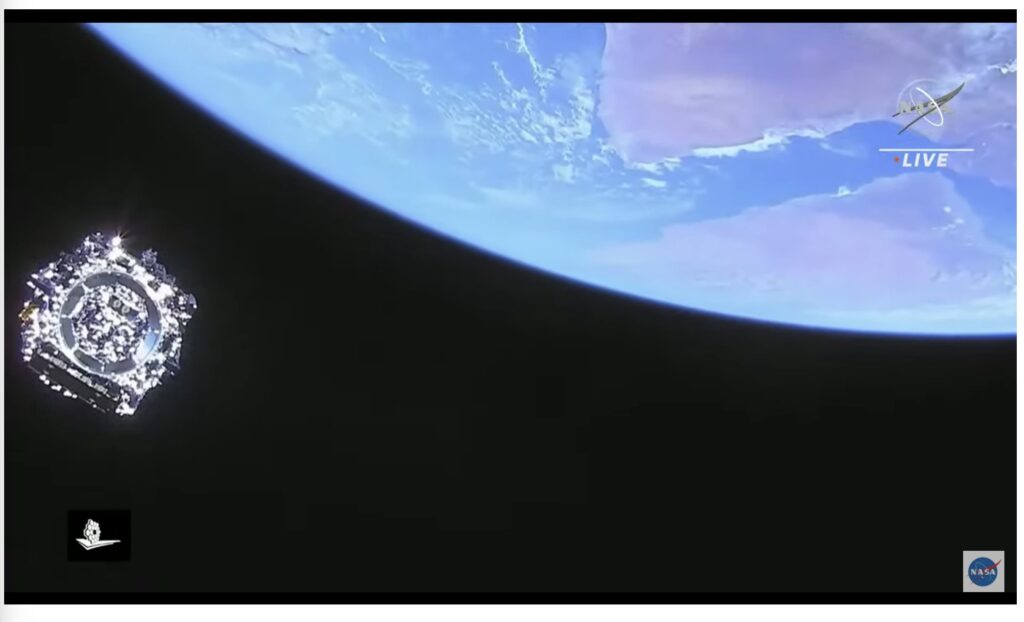
The entire launch team celebrated the successful launch in mission control, the culmination of years of hard work and anticipation. Astronomers and space enthusiasts across the globe watched alongside them on live streams as well, with many taking their anxieties and joys to #JWSTLaunch Twitter. It truly was an exciting Christmas morning!
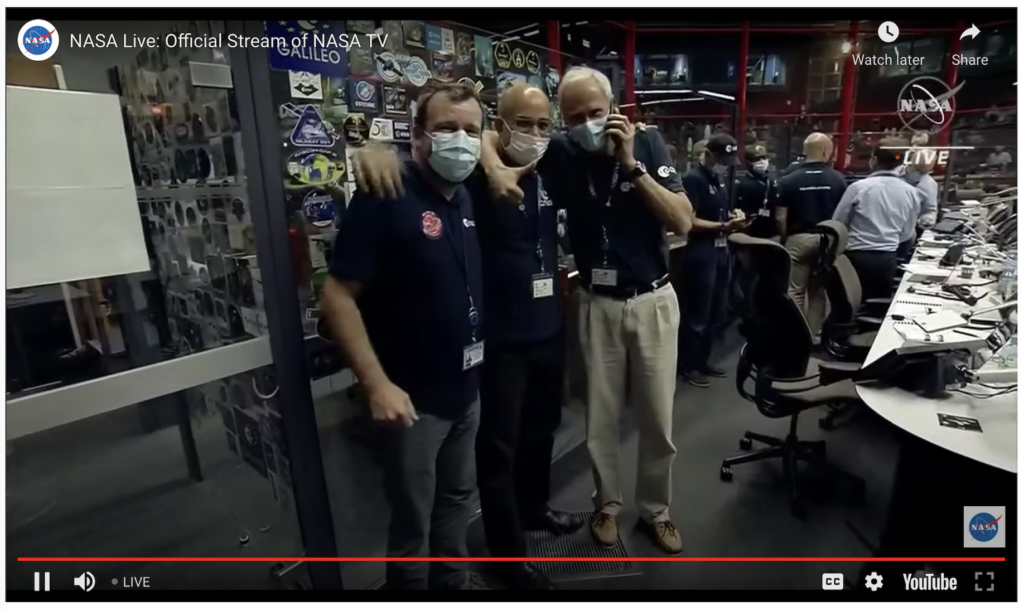

Now that JWST is off Earth, what comes next? On its first day in space, about 12 hours after launch, the spacecraft will use its rockets for its first trajectory correction to steer it in the right direction. After JWST passes the Moon’s orbit, about 2.5 days into its voyage, it’ll make its second steering maneuver. Then, the big unfolding and telescope commissioning begin:
- ~3-7 days after launch (late December 2021): Sunshield deploys, and spacecraft moves apart from telescope assembly. Mirrors unfold.
- ~30 days after launch (late January 2022): Telescope is cooling down, shaded by the sunshield, and the spacecraft makes a course correction to ensure it reaches its destination at L2 successfully. Warm electronics and flight software start up within this first month, too.
- ~33 days after launch: Instruments start powering up: Fine Guidance Sensor, then NIRCam, then NIRSpec.
- ~44 days after launch (mid-February 2022): Mission team starts adjusting and focusing mirrors.
- ~3 months after launch (March 2022): By the end of this 3rd month, the team plans to take the first science-quality images, and Webb will complete its first orbit around L2!
- ~4-6 months after launch: Mission team calibrates, tests, and optimizes all instruments.
- ~6 months after launch (June 2022): Webb starts routine science operations!
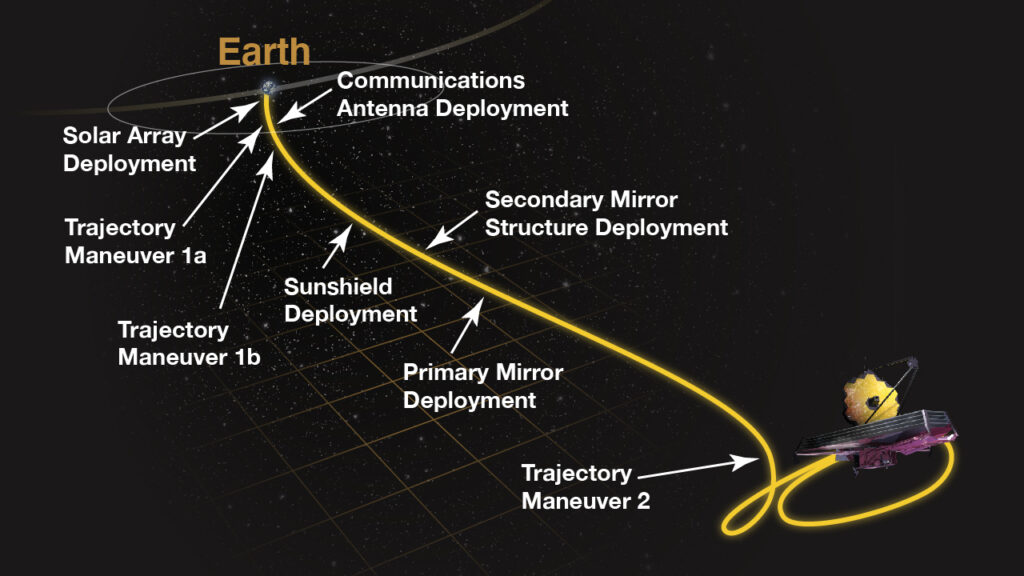
This launch is a huge step forward, but there’s obviously still a lot of work ahead to make sure the telescope is functioning properly—and you can keep track of JWST’s latest deployment status on this handy NASA webpage. If all goes well, though, we should have the first science with JWST by next summer.
There are many scientists so excited for the data JWST will return. For example, Astrobites authors Gourav Khullar, Katya Gozman, and collaborators are studying a massive galaxy known as COOL J1241+2219. “JWST spectroscopy will allow us to address many questions,e.g., how did this galaxy form its mass during the epoch of reionization?” he says. “Do distant galaxies, that live at a time when the universe was less than 1/10th its age, look anything like nearby systems?” There really is a lot to look forward to after today’s momentous launch as JWST begins exploring the universe!
If this is the first you’re hearing about JWST, check out our other bites on the mission’s history and science and on the discussion about its name. You can also watch the recording of the launch on NASA’s YouTube page, or read our Astrobites live-tweeting thread from this morning on Twitter.
Congratulations to the whole JWST mission team, and best of luck with unfolding the telescope and commissioning it for science!
Featured Image Credit: NASA/Webb
Edited by: Huei Sears, Lili Alderson, Pratik Gandhi

